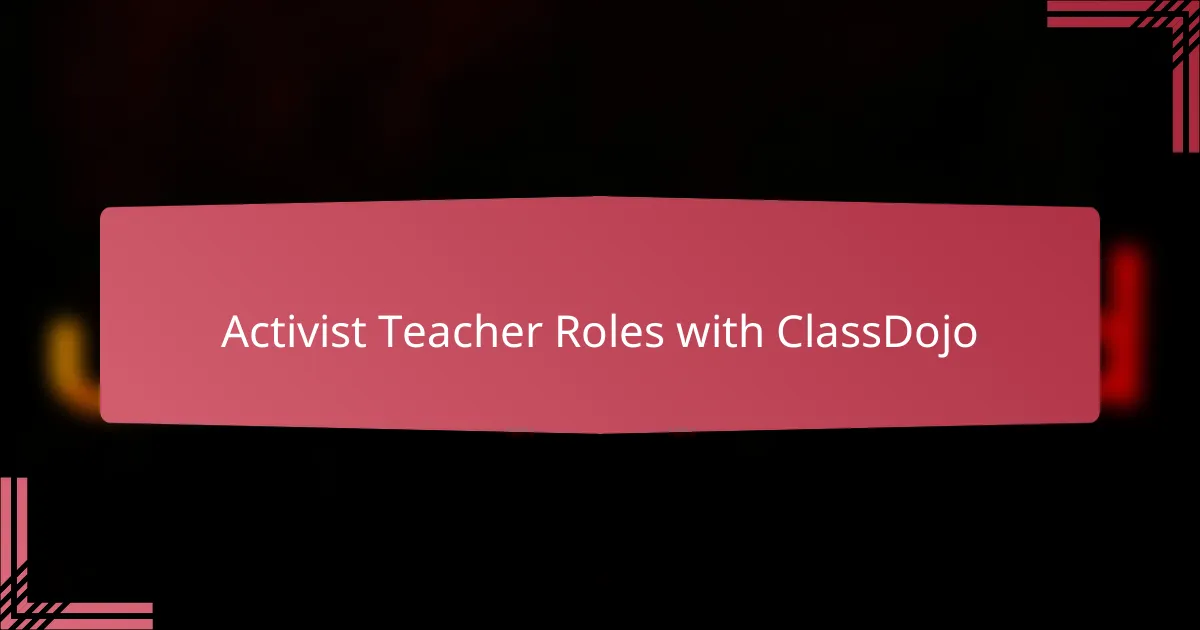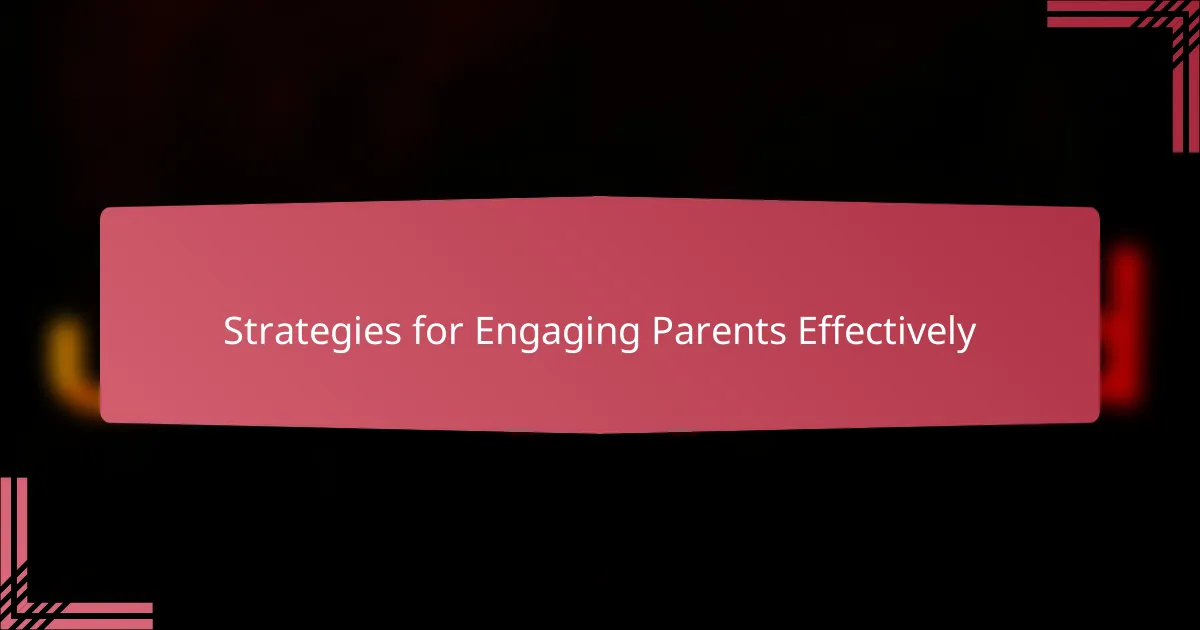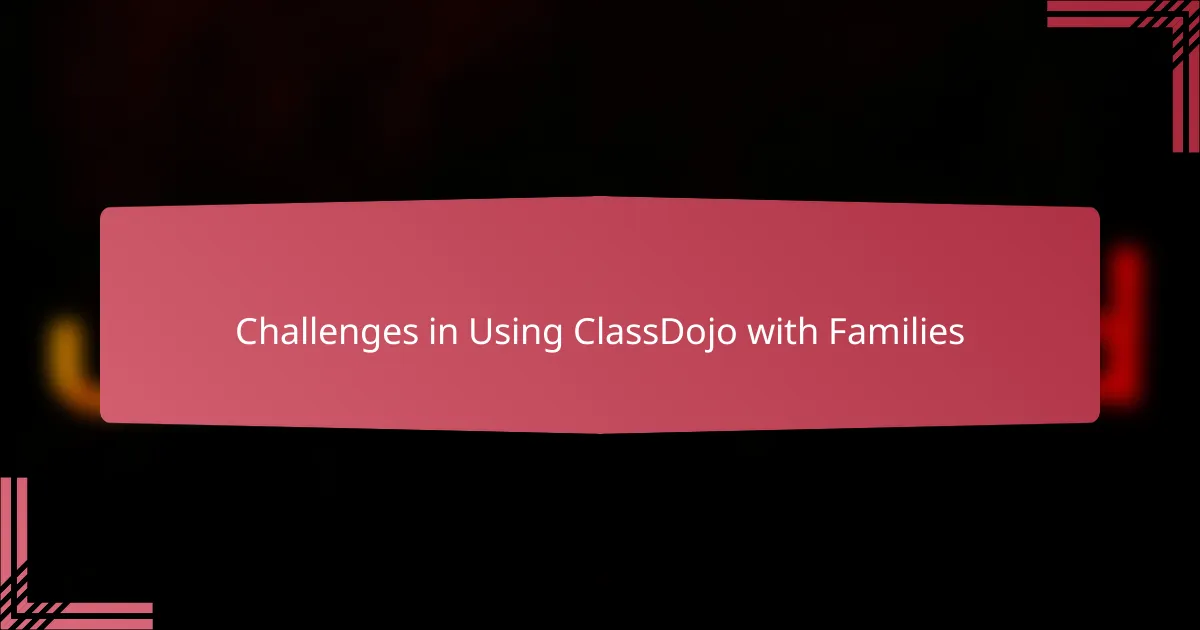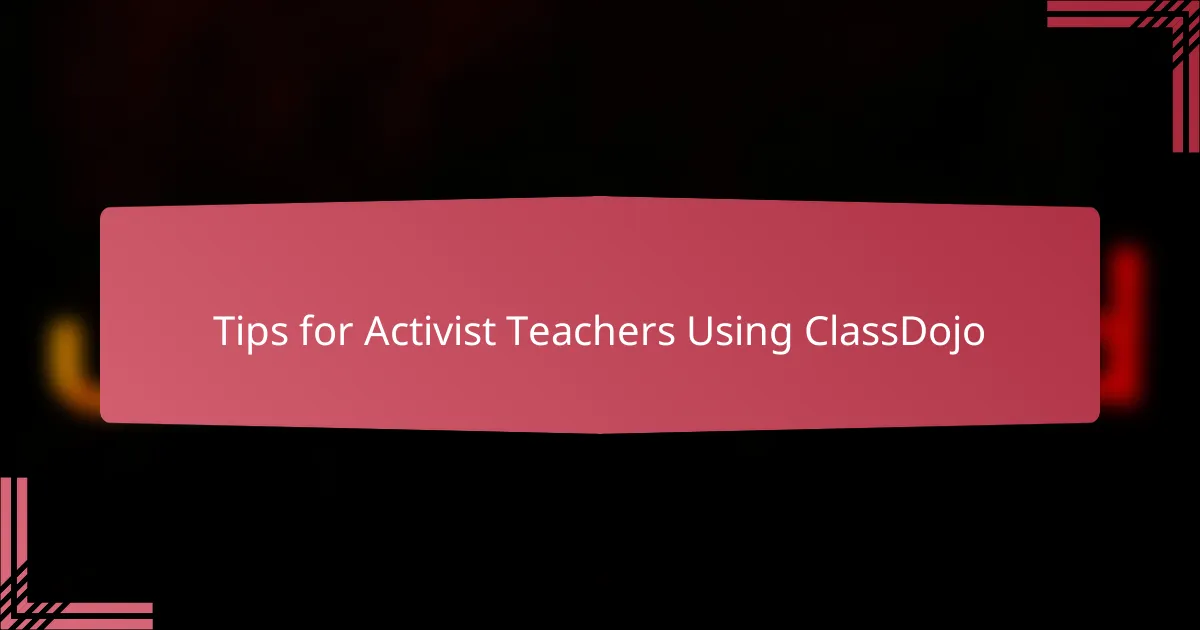Key takeaways
- ClassDojo enhances parent engagement by providing real-time insights into their child’s behavior and progress, fostering a stronger home-school partnership.
- Active parental involvement positively impacts children’s confidence and motivation, reinforcing their learning experiences.
- Effective communication strategies, such as setting clear expectations and encouraging dialogue, help build trust and collaboration between parents and teachers.
- Challenges like unequal access to technology and potential misinterpretations of updates require ongoing reflection and adjustment from educators to maintain meaningful connections.

Understanding ClassDojo for Parents
ClassDojo is a communication platform designed to connect teachers, students, and parents in real-time. When I first introduced ClassDojo to the parents in my class, I noticed how it opened a new window into the classroom experience for them. Have you ever wondered how a simple app could transform the way families engage with their child’s learning journey?
What struck me the most was how parents appreciated instant updates about their child’s behavior and progress. It made me think—when parents truly see the daily wins and struggles, doesn’t it create a stronger partnership between home and school? From my experience, understanding ClassDojo helps parents feel more involved and less like outsiders in the education process.
I’ve heard some parents worry about being overwhelmed by too many notifications, but in my view, the key is balance. When parents use ClassDojo thoughtfully, it becomes less about constant monitoring and more about meaningful connection. What’s your take on technology shaping parent-teacher interactions? For me, this tool bridges gaps and fosters deeper understanding rather than just tracking behavior.

Benefits of Parental Involvement
When parents stay involved through tools like ClassDojo, I’ve seen firsthand how it boosts a child’s confidence. Imagine a student knowing their parent saw the positive feedback from class—doesn’t that affirm their efforts in a way words alone sometimes can’t? This sense of being seen and supported creates a ripple effect that motivates kids to keep trying.
It’s also powerful how parental involvement helps teachers tailor their approach. When I receive insights from parents via ClassDojo, I feel more connected to the child’s world outside school. Doesn’t it make sense that knowing a bit about what’s happening at home allows us to respond more empathetically and effectively in the classroom?
Sometimes, I wonder if parents recognize just how much their engagement influences attitudes toward learning. Have you noticed how kids light up when they know their parents care about their day-to-day progress? That emotional connection—amplified by timely communication—can truly transform not only academic outcomes but the whole classroom community.

Activist Teacher Roles with ClassDojo
In my experience, being an activist teacher with ClassDojo means more than just sharing updates; it’s about empowering families to become co-advocates for their children’s education. Have you ever thought about how this platform can shift the power dynamics in the classroom? When I actively involve parents through ClassDojo, I see them stepping up as partners who challenge inequities and support student voice.
Sometimes, I reflect on the role I play in guiding parents to understand not only what their child is doing but why it matters in a broader social context. Does it feel challenging to use a tool like ClassDojo not just for behavior tracking but as a springboard for critical conversations? I’ve found that when I frame ClassDojo as a tool for collective action rather than compliance, parents become more engaged in advocating for fairer practices.
ClassDojo also offers a unique space where I can model transparency and trust, values that resonate deeply in activist teaching. What if we saw each notification not as surveillance but as an invitation to dialogue and address systemic challenges together? For me, these moments are where real transformation begins—when teachers, parents, and students align around shared goals for justice and equity.

Strategies for Engaging Parents Effectively
One strategy I’ve found effective is setting clear expectations from the start about how and when I use ClassDojo to communicate. I remember sharing with parents that updates would be concise and focused on meaningful moments, not just daily minutiae, which helped ease their anxiety about being bombarded with notifications. Isn’t it reassuring when technology feels like a helpful bridge rather than an overwhelming flood of information?
Another approach I rely on involves encouraging parents to respond and share their observations through ClassDojo. When I invited a mom to comment on her child’s behavior updates, it sparked a valuable back-and-forth that gave me insights into what was happening at home. Have you noticed how these conversations transform ClassDojo from a one-way bulletin into a collaborative dialogue that strengthens trust?
Finally, I make it a point to celebrate small wins with parents regularly, not just flag challenges. I recall a time when highlighting a student’s effort even on a tough day led to a parent expressing gratitude for seeing progress beyond grades. Doesn’t that feel like planting seeds of positivity that can grow into deeper engagement? From my view, parents who feel genuinely recognized are more likely to stay involved and advocate alongside us.

Challenges in Using ClassDojo with Families
One challenge I’ve noticed with ClassDojo is that not all families have equal access to or comfort with technology. There have been times when I worried some parents might feel excluded or frustrated, especially if they lack reliable internet or struggle with the app’s interface. Have you ever encountered that disconnect where a tool meant to bring people closer actually creates distance?
Another difficulty lies in the potential for misinterpretation of behavior updates. From my experience, a brief notification about a child’s conduct can sometimes be taken out of context by parents, leading to unnecessary worry or defensiveness. How often do we pause to consider how a quick message might be received differently than intended, and how that affects the trust we’re working so hard to build?
Lastly, I’ve found balancing communication without overwhelming parents is a delicate dance. Early on, I noticed some parents felt bombarded by frequent alerts, which ironically caused disengagement. Doesn’t it seem ironic that too much connection can sometimes push people away? Managing this balance requires ongoing reflection and adjustment, something I’m continuously learning through my own missteps.

Personal Experiences with Parent Involvement
In my early days using ClassDojo, I remember one parent sharing how seeing daily snapshots of her child’s kindness and effort made her feel more connected than ever before. That moment stuck with me—how small updates can build big bridges between home and school. Have you experienced how these tiny windows into the classroom can open up heartfelt conversations at the dinner table?
Sometimes, I notice parents becoming more confident advocates simply because they’re better informed. One dad told me how he finally understood his child’s struggles with attention, and that insight shifted how he supported homework time. Isn’t it powerful when involvement moves beyond check-ins and becomes real partnership grounded in understanding?
Of course, not every interaction is seamless. I’ve also felt the frustration when a parent misreads a behavior note and anxiety flares unnecessarily. It made me realize how crucial context and tone are in our messages. How often do we pause to consider how a few words might shape perceptions—positively or negatively—and what that means for trust in these relationships?

Tips for Activist Teachers Using ClassDojo
It’s essential to remember that ClassDojo is a tool—not a solution by itself. When I started, I made sure to use it as a starting point for real conversations, not just notifications. Have you tried asking parents what kind of updates feel helpful rather than overwhelming? That simple step made a huge difference in how engaged families became in my classroom.
Another tip I keep close is to be honest and transparent about both strengths and struggles. I once shared a candid note about a student’s challenge, paired with a request for parental insight, and it transformed the parent-teacher relationship into a genuine partnership. Doesn’t it feel more respectful when communication is two-way and framed around growth instead of judgment?
Finally, celebrating small wins publicly with parents through ClassDojo has been a game changer for me. Highlighting moments of kindness or effort, not just academics, encourages families to see their children as whole people. When was the last time you shared something positive just to brighten a parent’s day? Those moments build trust faster than any report card ever could.